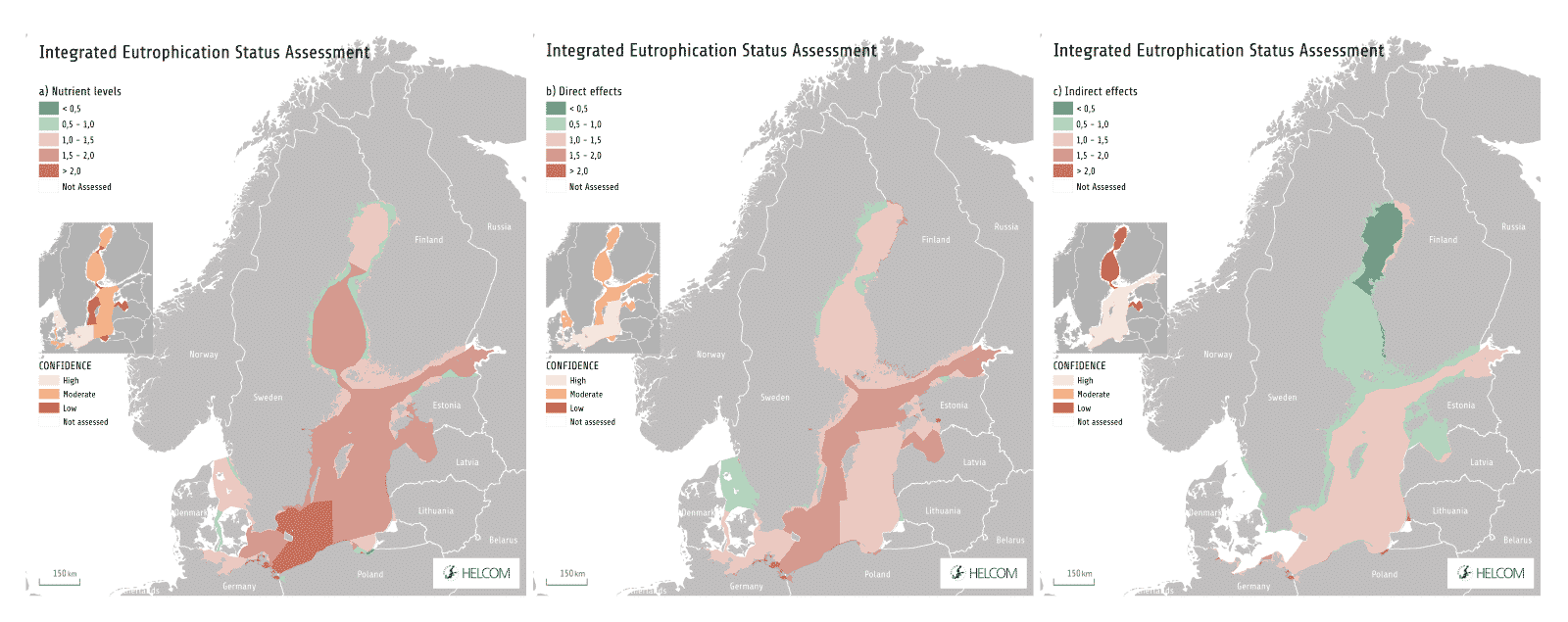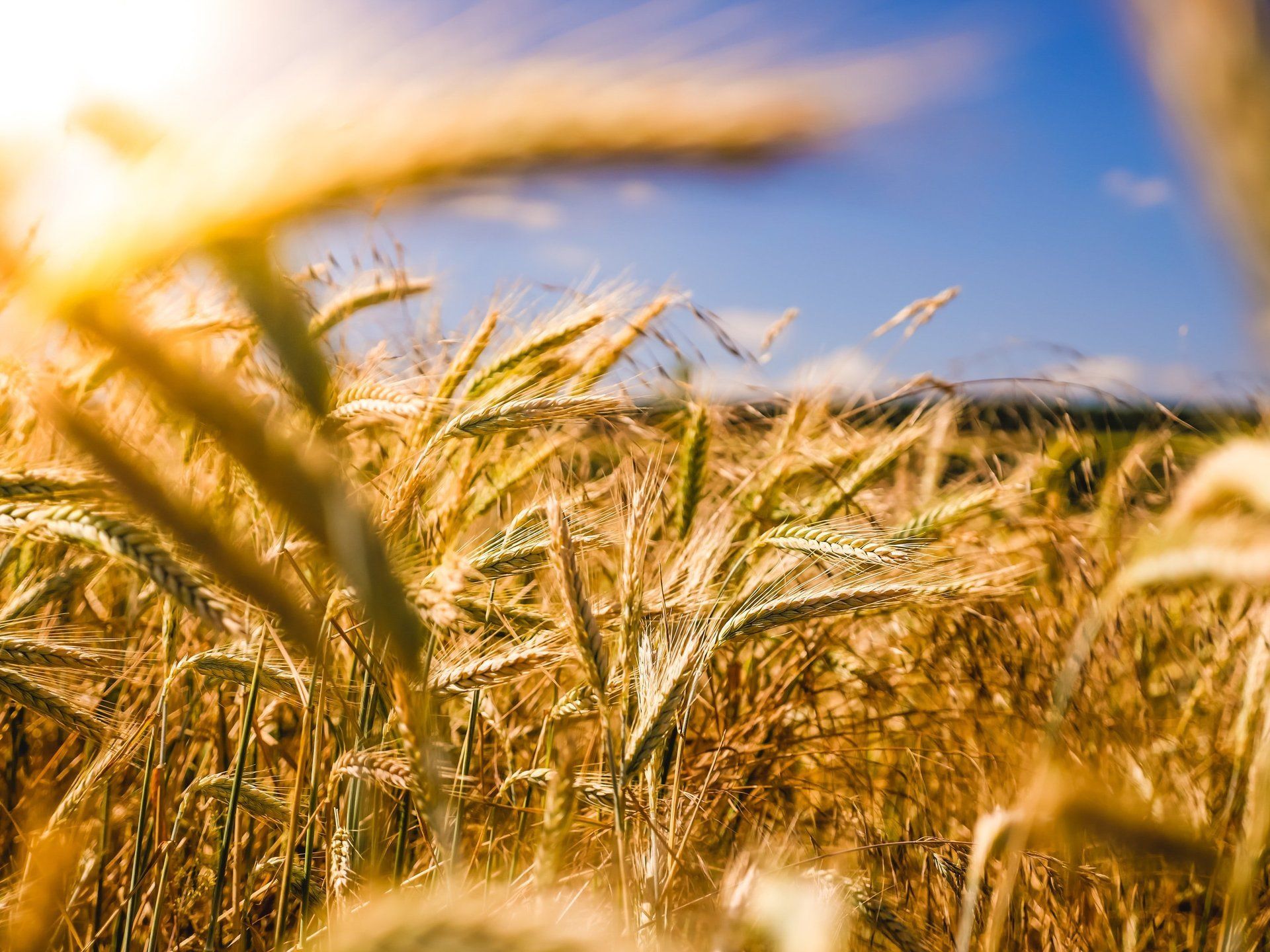Das Problem
Nutrients over-enrichment, mainly nitrogen (N) and phosphorus (P), into ground and surface water is the cause of
eutrophication . The main effect of leaching of nutrients is the rapid growth of algae on the surface of the water, a phenomenon called “algae bloom”. When it occurs, the surface layer formed by algae prevents sunlight from getting through it and reaching the bottom, causing decreased water clarity and the death of larger plant species such as seagrass. The loss of plant life represents the destruction of habitats that provided shelter, food and nursery grounds for many marine animals. Moreover, the deposition of organic material – decomposed by bacteria – increases oxygen consumption on the seafloor, which leads to oxygen depletion and creates
dead zones . These now cover 20% of the Baltic Sea bottom. Some algae species are toxic for marine mammals and can also be dangerous for humans.
Eutrophication causes reduction of biodiversity, erosion of coasts and impoverishment in fish population. Despite some small improvements, the Baltic Sea is heavily affected by eutrophication (
97% of the surface area ) resulting from excess nutrient loads for many years.
Climate change could also have a negative impact on the Baltic Sea catchment area, exacerbating eutrophication – since water and air temperature rise could create better conditions for the growth of algae blooms.
Where does over-fertilization come from?
Most of the water quality problems in the Baltic Sea originate upstream from the thousands of rivers in the catchment area. Some 25% (25% for Baltic proper, 20% for Baltic Sea) of the nutrient load in the Baltic Sea comes from waste water and upstream sources of pollution – not only from farms, but also from households and ports.
According to CCB´s estimates potential losses from 22 million tons of fertilizers handled in the Baltic ports annually may account up to several thousand tons of directly bioavailable nitrogen and phosphorus.
Das Ziel
How is CCB working with this issue?
-
Interessenvertretung
- Promotion of the implementation of the EU Circular Economy package , including its Action Plan;
- Support positive changes in water management/river basin management;
- Push forward the implementation of the Baltic Sea Regional Nutrient Recycling Strategy;
- Support the objectives of the revised HELCOM Baltic Sea Action Plan (BSAP) ;
- Promotion of the full use of the revised HELCOM Annex III Part 2 (“Prevention of Pollution from Agriculture”), to strengthen the enforcement of requirements on Industrial Animal Farming (IAF);
- Provide inputs and continue the cooperation to/with HELCOM Working Groups , European Environmental Bureau (EEB) on CAP, BSAP, WFD, ND and MSFD implementation processes.
-
Without engaging and building awareness with actors and stakeholders at all levels that are relevant for reducing nutrient inputs, including those in agriculture and water management sectors, it is impossible to move any further with nutrient reductions. Most actors and stakeholders often lack knowledge and opportunities for sharing best practices. The successful restart of the “Greener Agriculture for a Sustainable Sea” (GRASS) Conference and Baltic Sea Farmer of the Year Award has proven itself a catalyst for change.
-
Aktivitäten & Projekte
- GRASS-Konferenz und Auszeichnung „Baltseelandwirt des Jahres“River UniversityProjekt zur Reduzierung der Nährstoffbelastung der Ostsee durch die Entwicklung von Lösungen für die Güllelagerung in kleinen landwirtschaftlichen BetriebenAnalyse des Wassermanagements und der lokalen Wasserressourcen sowie des AbwassermanagementsÜberwachung der Quellen von Nährstoffeinträgen (industrielle Tierhaltung, Düngemittelhafenterminals usw.)
-
Andere Ressourcen
Maps:
MATERIALIEN & MEDIEN
WAS KÖNNEN WIR TUN?
What can countries do together?
- Joint action should focus on the application of sustainable, ecologically-oriented solutions for wastewater treatment, with a high degree of nutrient recycling, clear and measurable targets in water management;
- Work together to promote ecologically sustainable agricultural practices within the framework of the recommendations under HELCOM;
- Reform the Common Agriculture Policy (CAP) to promote sustainable agriculture via coupling EU agricultural subsidies with requirements to take measures to substantially reduce the nutrient run-off to water from agricultural production;
- Improvements and efficiency in water management, working towards river connectivity and river restoration (including dam removal).
Was kann jedes Land tun?
- Develop national programmes for the implementation of the HELCOM agreement on wastewater management and water savings as the saving of water instead of wasting it is the most effective way to avoid water pollution problems;
- Promote the use of sustainable wastewater technologies, including nutrient recycling approaches that are particularly suitable for the treatment of wastewater from small to medium sized sources;
- Introduce environmental conditionality on all agricultural subsidies, such as requirements for nutrient-balanced fertilization;
- Promote the use of less intensive, organic farming practices;
Reduce emissions from land and maritime traffic; - Ban open cage fish aquaculture;
- Raise consumer awareness on limiting meat consumption;
- Improvements and efficiency in water management with clear measures and targets, taking climate change and nature based solutions into consideration, working towards river connectivity and river restoration (including dam removal).
What can you do?
Nehmen Sie Kontakt mit dem CCB-Arbeitsbereichsleiter Eutrophierung auf
If you have questions or want to collaborate
send an e-mail to:
secretariat [at] ccb.se
We continue to act, do you want to know more?
Klicken Sie auf die Schaltfläche unten, um unsere anderen Arbeitsbereiche zu entdecken.



